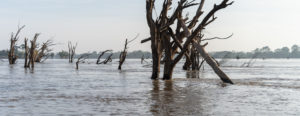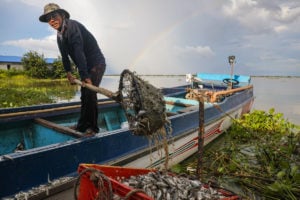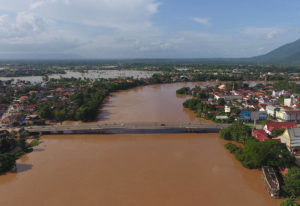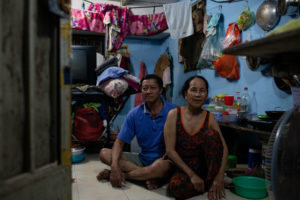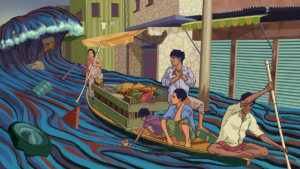Kong Chanthy’s face lights up as he reminisces about the past. Thirty years ago, the flooded forest in the middle of the Mekong River in northeast Cambodia, just south of the border with Laos, teemed with life and communities prospered.
The forest didn’t just provide sustenance for the 13,000 people who live along the river north of Stung Treng town, says Kong, who is the head of community fisheries and ecotourism in O’Svay commune. It nourished endangered birds and fish, some migrating up the Mekong from Tonle Sap Lake in the country’s northwest – the largest inland fishery in the world, supplying Cambodians with 60% of their protein. And its shrubs and trees also offered river animals refuge from predators and safe spawning grounds.
“We poured salt into the boat [to keep the fish fresh], used lanterns, hit the boat with a paddle and fish just jumped into the boat,” Kong says, remembering night fishing in the 1980s. Kong has spent years researching this unique ecosystem and its fish species for a state research institution and non-governmental groups.
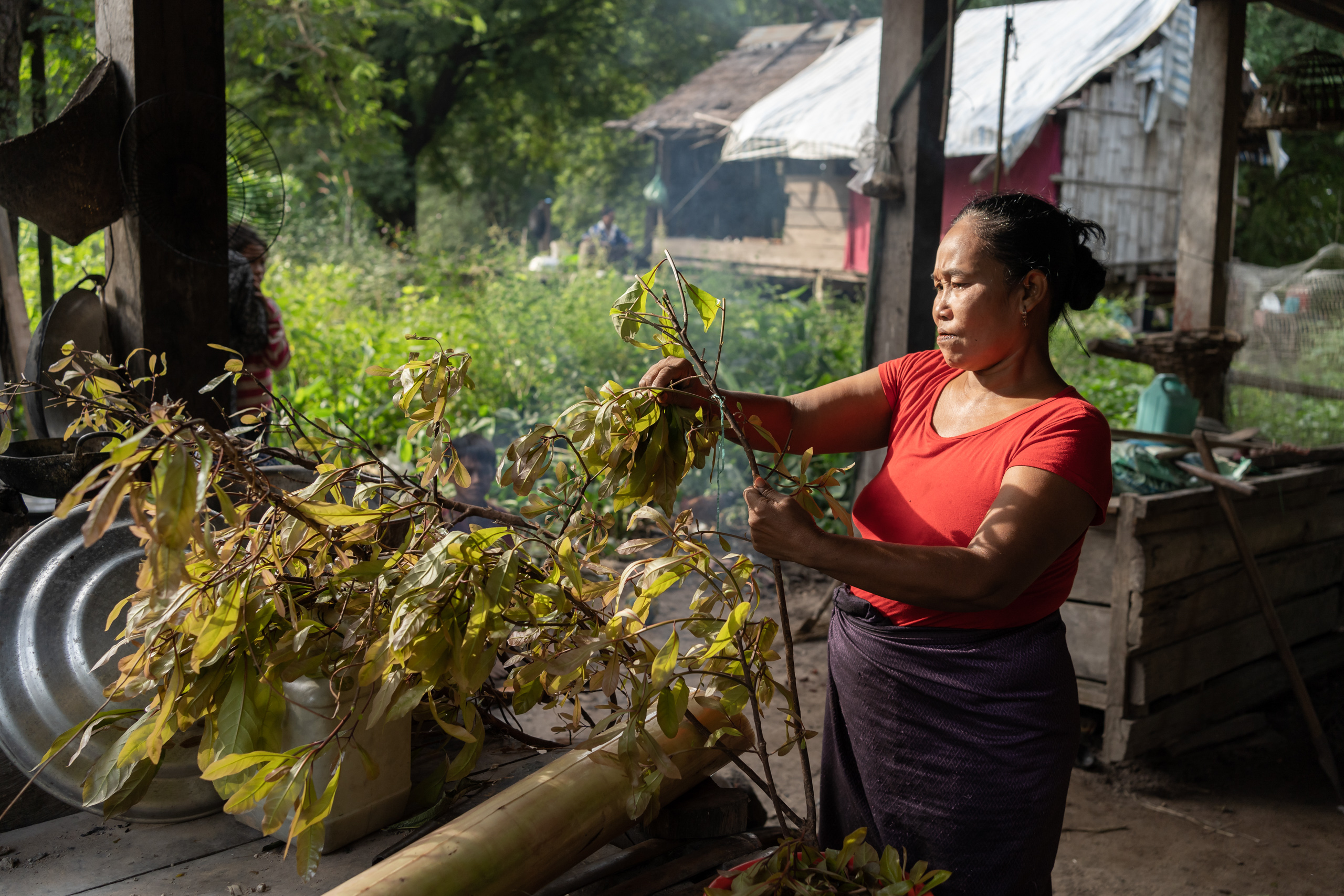


The area’s exceptional biodiversity didn’t go unnoticed. In 1999 the flooded forest was designated a Wetland of International Importance under UNESCO’s Ramsar Convention.
Covering an area of 14,600 hectares, the Ramsar site is an ecosystem that can only be found along this 40-kilometre stretch of the Mekong. The forest’s iconic landscape – strangler figs, with their tentacle-like branches wrapped around massive Anogeissus and Acacia trees – are adapted to the unique conditions, and attract international tourists. As did a population of freshwater dolphins in a nearby deep pool, the last member of which died last year.
The trees, some as tall as 25 metres, change with the seasonal fluctuations of the river. They lose their leaves as the Mekong swells with monsoon rains and they become submerged. Then when water levels drop during the dry season, typically from October to early May, they dry out and grow new leaves.
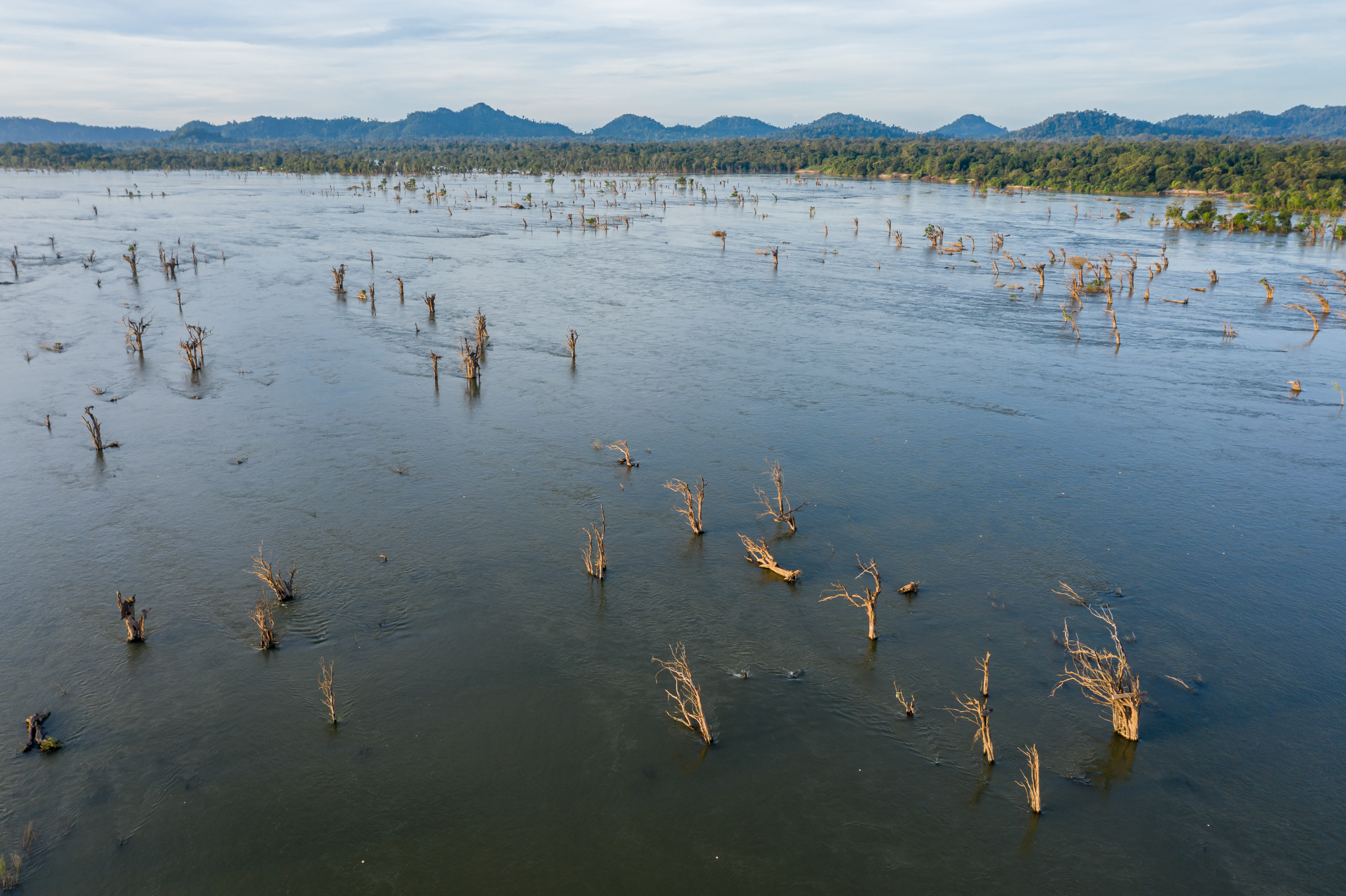
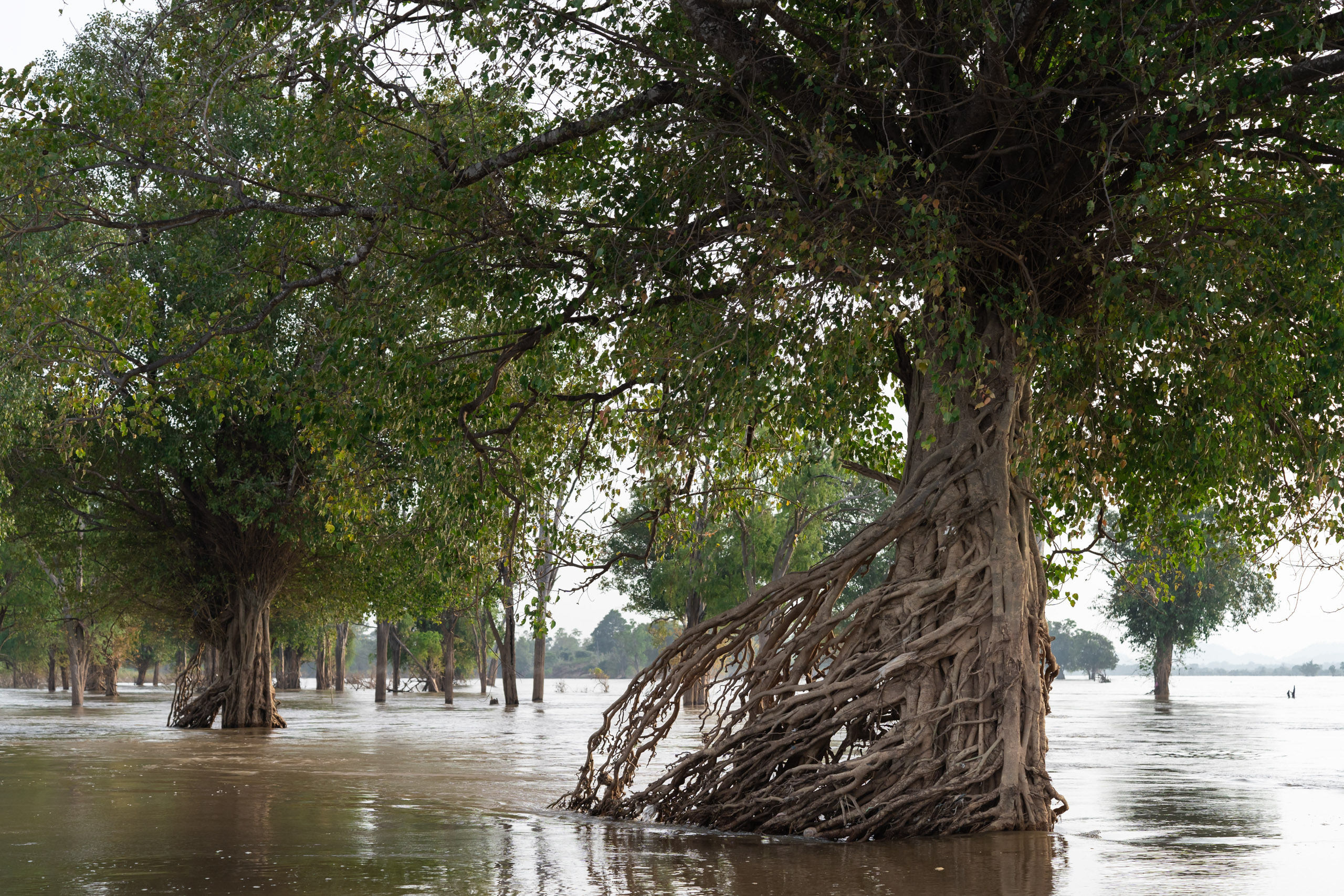

But in the early 2000s, Kong noticed something strange. The river stopped receding during the dry season. Then the flooded forest started to die. Today, thousands of gnarled, dead trees protrude from the water. “Up to now 70-80% of the forest has died,” Kong says.
Local fisheries have already been decimated by illegal fishing and dams blocking migratory routes, Kong explains, but the damage being done to this fish habitat has made matters worse. Similarly, tourism has been reeling from the loss of the flooded forest. “We are suffering,” Kong says.
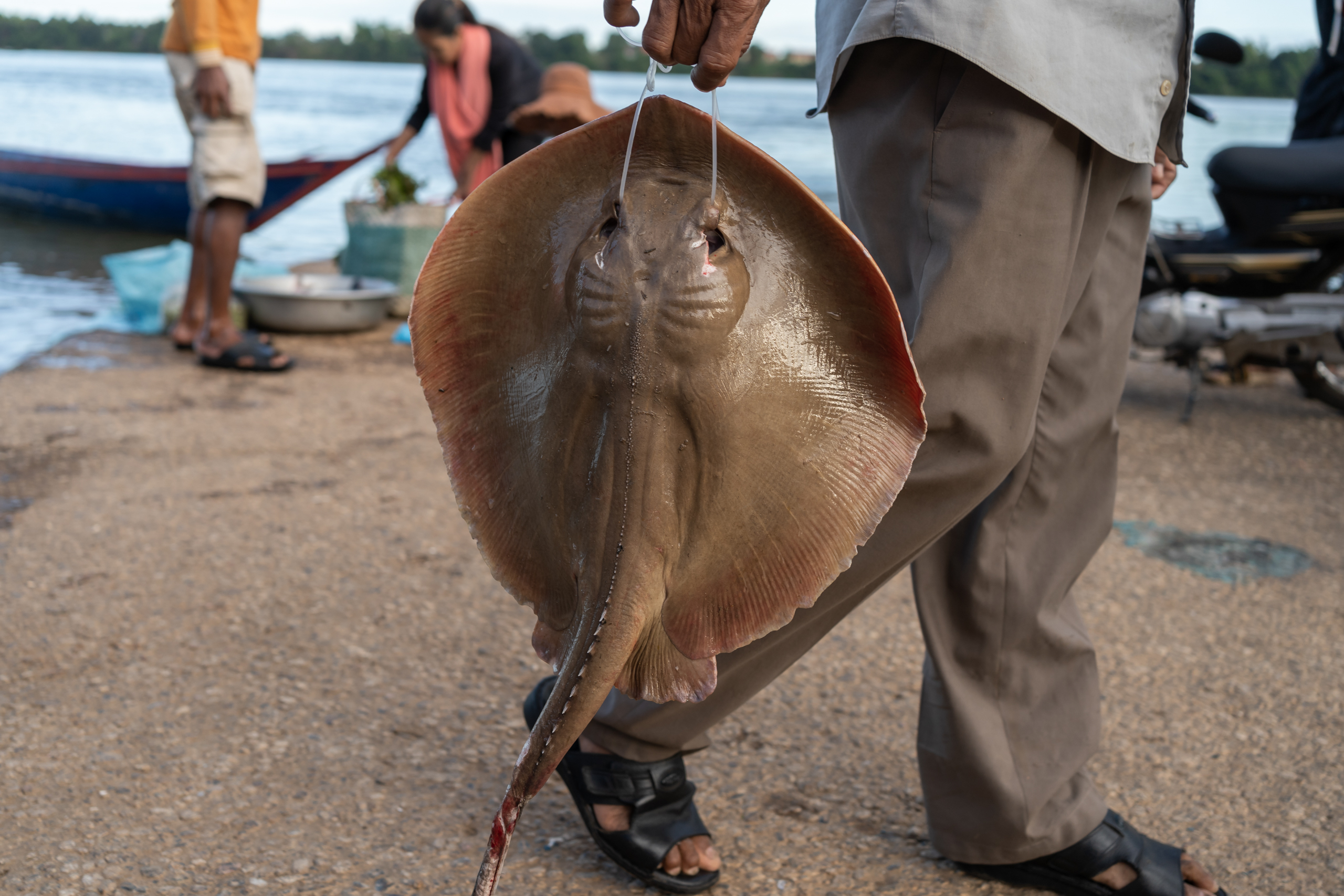

All the local people who spoke to The Third Pole echoed Kong’s observations. They talked about the devastation that has accompanied the decline of the forest, from decreasing bird and fish populations, to the damage being done to other habitats like the sandbars associated with the forest. Many said they haven’t seen certain fish species for years. And many blamed the unusual rises in water levels on the Don Sahong dam, which is just four kilometres north of the protected Ramsar site in southern Laos.
Cumulative impacts
Ian Baird, professor of geography at the University of Wisconsin-Madison in the United States, agrees that the flooded forest is in trouble. Baird lived in the area during the 1990s and went back to investigate the demise of the forest in May 2022, finding that 40-50% of its tall trees had died. He says the cause is the high-volume dams in China and Laos, which store water during the monsoon season and release it in the dry season to generate electricity.
“There’s been a lot of discussion about cumulative [dam] impacts, but there are very few very good examples where you could see it,” Baird says. The Stung Treng flooded forest, he says, is one of them. Baird is, however, at pains to make clear that the Don Sahong dam on its own does not have the capacity to store enough water to affect the river’s flow. Instead, he says the damage to the forest is being caused by the combined operation of several dams on the Mekong and its tributaries.
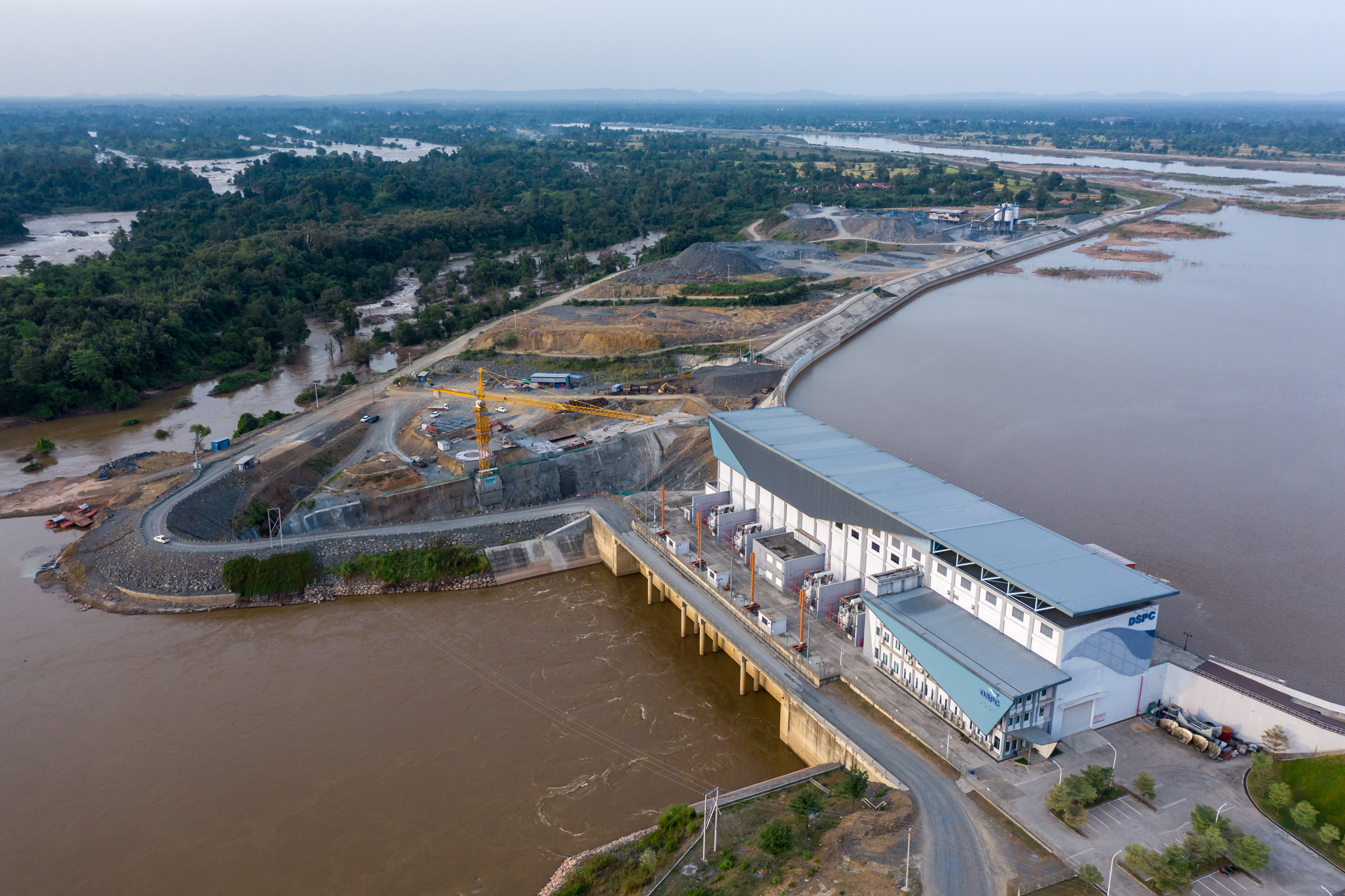
More than 150 dams have so far been built in the Mekong basin, spanning China, Myanmar, Thailand, Laos, Cambodia and Vietnam. This includes 13 dams straddling the Mekong’s mainstream – 11 in China, where the river is called the Lancang, and two in Laos. In China, the Xiaowan and the Nuozhadu dams “hold more than 50% of the total storage capacity [of dams] in the Mekong basin”, according to US-based thinktank the Stimson Center.
The majority of these dams have been built since the turn of the century. Xiaowan and Nuozhadu started operation in 2008 and 2012 respectively.
The rise in water levels observed by local people is reflected in data from the Mekong River Commission (MRC), an intergovernmental advisory body involving Thailand, Vietnam, Laos and Cambodia that coordinates on the development of water-related resources in the lower Mekong basin. Measurements taken over the past 100 years in Pakse, southern Laos, clearly show that water levels during the dry season have been rising over the past 15 years, Baird said during an online lecture in November 2022.
In response to questions from The Third Pole, the MRC Secretariat acknowledged that the release of water from upstream dams “could create higher dry season flow”, adding that “the impact decreases further downstream and does not become so obvious at Stung Treng”.
The secretariat did not confirm if it has raised the issue of the dying forest with Laos and China, but said the current condition of wetlands in the lower Mekong basin will be addressed in its 2023 report. On preserving wetlands, the secretariat said it is working with its four member states plus China and Myanmar on tracing “original cause(s) that affect water levels and volume in a way that exceeds a maximum acceptable level”.
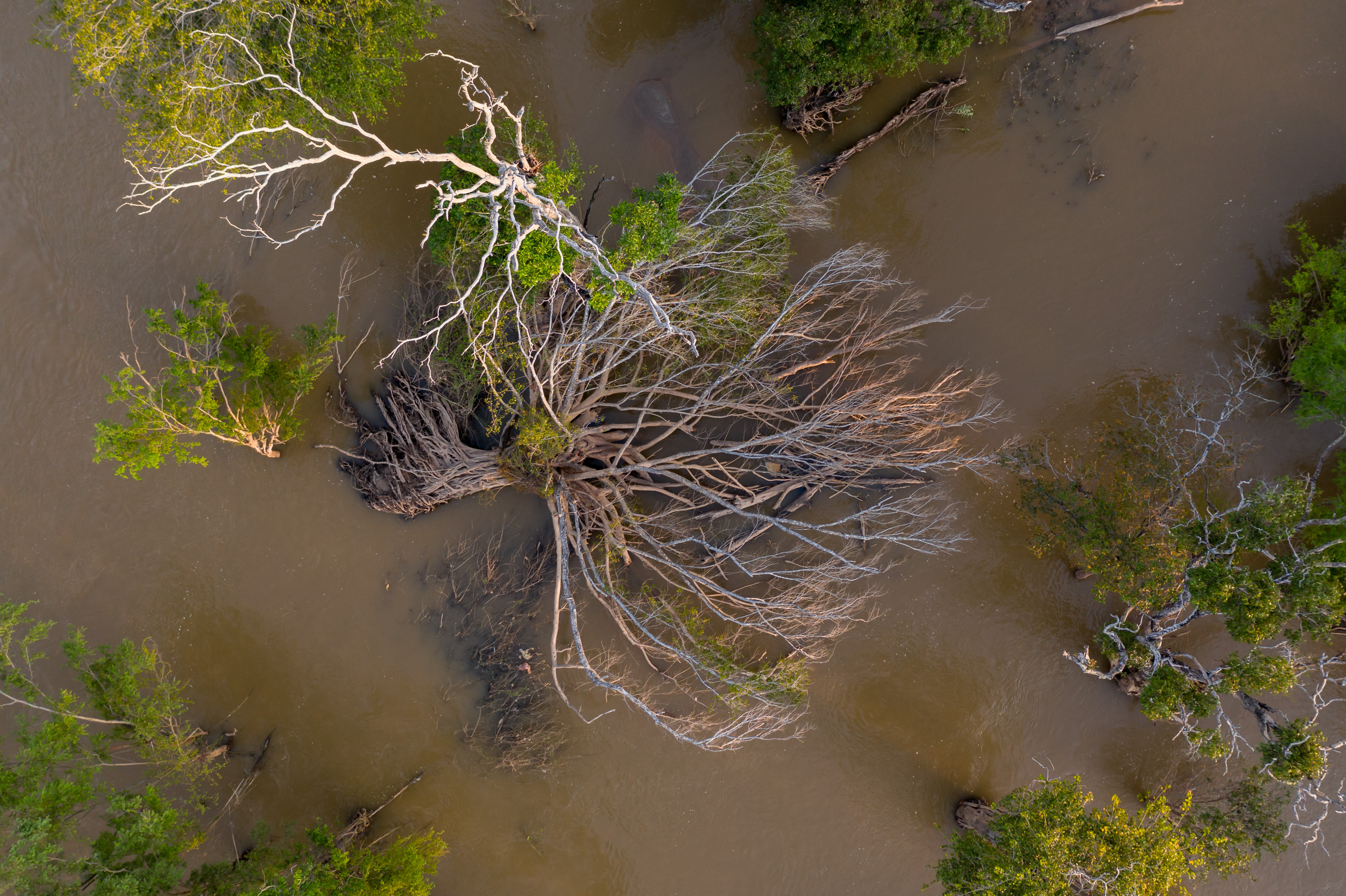
China is not an MRC member and does not directly inform downstream nations about its hydropower projects. According to Brian Eyler, director of the Stimson Center’s Southeast Asia Program: “China’s 12th dam on the Mekong mainstream is nearly complete. The only way we know this is via satellite imagery provided by platforms like the Mekong Dam Monitor.”
There is, however, some cooperation. In 2020, climatologists claimed that upstream Mekong dams in China were limiting the water flow during the rainy season, exacerbating the effects of droughts in Cambodia, Thailand, Laos and Vietnam. Following this, in October 2020 China agreed to share year-round water data with the MRC.
The future of Stung Treng’s flooded forest
Chhoun Chhorn, the provincial environment department’s deputy director for the Stung Treng Ramsar site, is not aware of any steps being taken by Cambodia’s Ministry of Environment – which did not respond to The Third Pole’s request for comment – other than discussions to replant flooded forest trees. “We are in the process of looking for partners,” he says. “As you are aware, we don’t have the budget. We need to plant trees that can survive the geography [of the flooded forest].”
The trees typically attach themselves to the rocky riverbed in the middle of the Mekong rapids, so have to be both tough and lucky.
Sai Fang, chief of Koh Cheu Teal Touch village, within the Ramsar site, also thought about planting trees to save the forest and his community. But after long deliberation he reached the conclusion that “replanting trees is impossible”. Mostly, he says, because fluctuating water levels mean the growing trees are frequently submerged.
The 60-year-old grandfather has come to see moving away from the area as the only solution, especially for the young. “Livelihoods were better before because people could catch fish for sale on a daily basis. Now they can’t catch fish,” he says. “Only migration can help people make a living.”
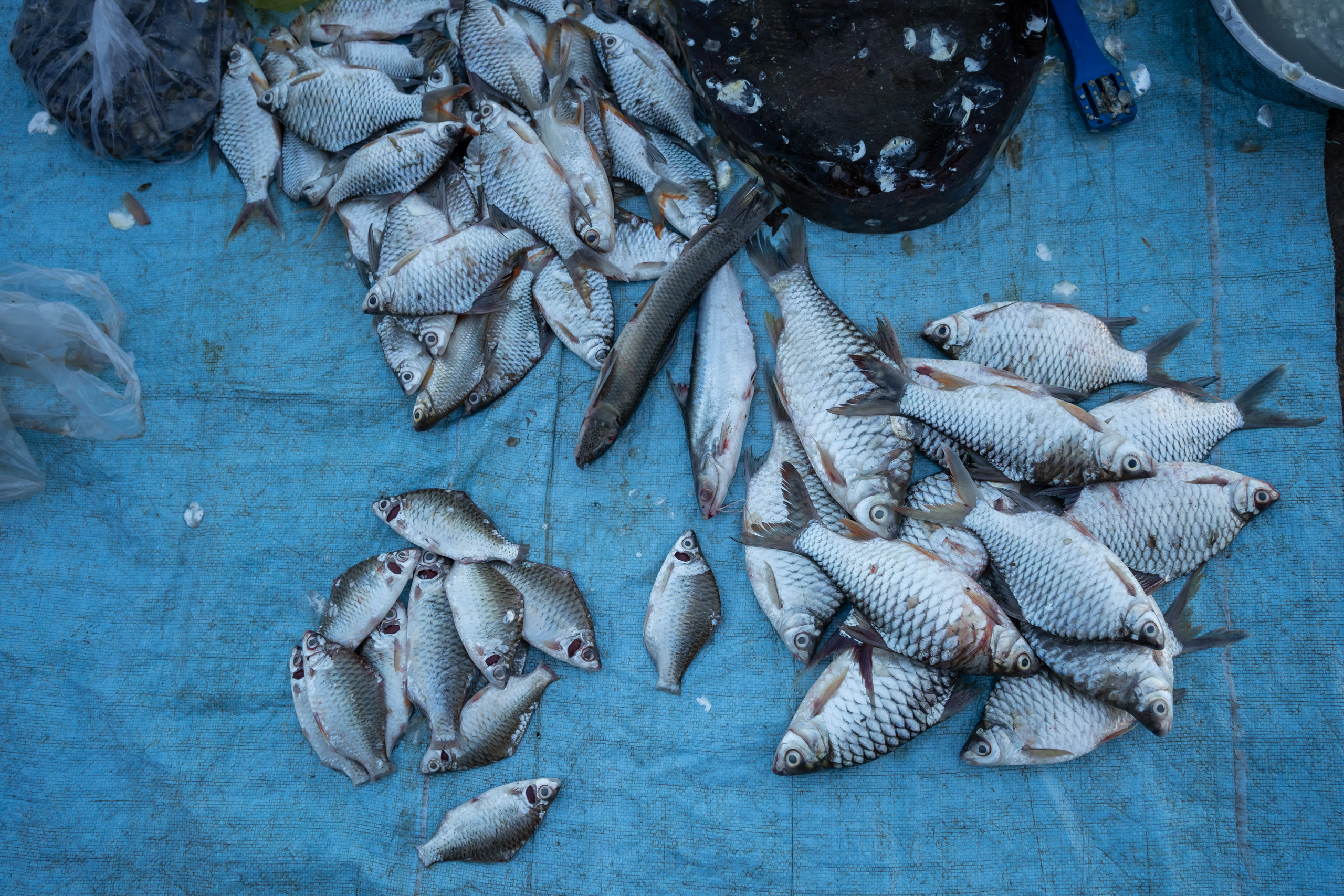


Men and women from Sai’s village as well as others in the Stung Treng area have been searching for a better life elsewhere in Cambodia, or even further afield. Often they work as labourers on plantations and construction sites, or in beauty salons and restaurants in the capital Phnom Penh. Others end up as domestic workers in far-flung places like Saudi Arabia, or toil in factories in neighbouring Thailand.
Sai’s own granddaughters, aged 19 and 22, travelled to Thailand in February 2022 to help the family make ends meet. Recruited by neighbours who were already in the country, they were promised domestic work.
“We feel sad because they’ve been there for months and haven’t sent any money,” the village chief says. “They keep changing employers because the employers are bad.”
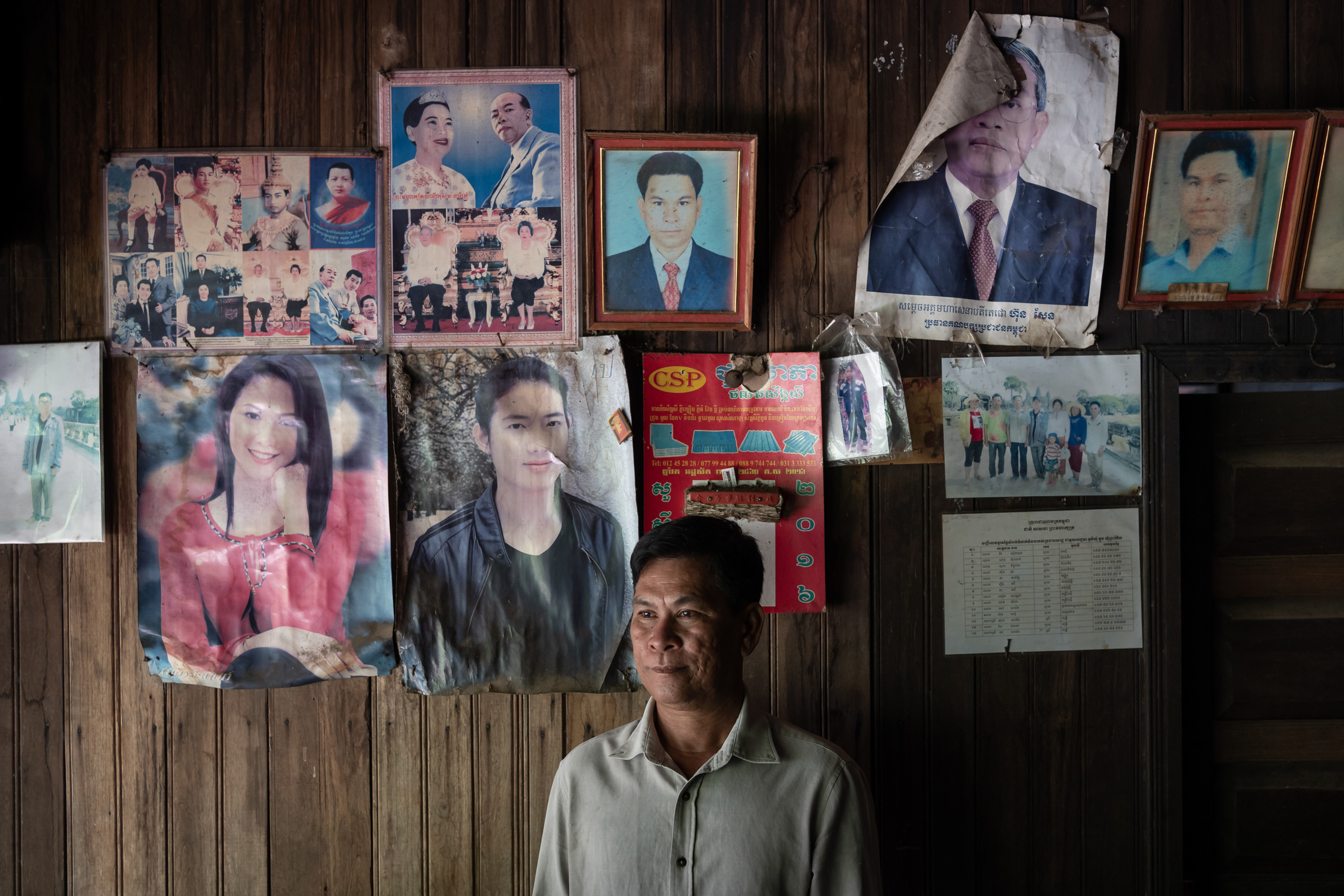
Additional reporting and translation by Vutha Srey. This article was reported with the support of the Pulitzer Center’s Rainforest Journalism Fund.
All images can be republished as part of the article, but those credited with a copyright symbol cannot be used independently of it. Credit information should not be changed.
